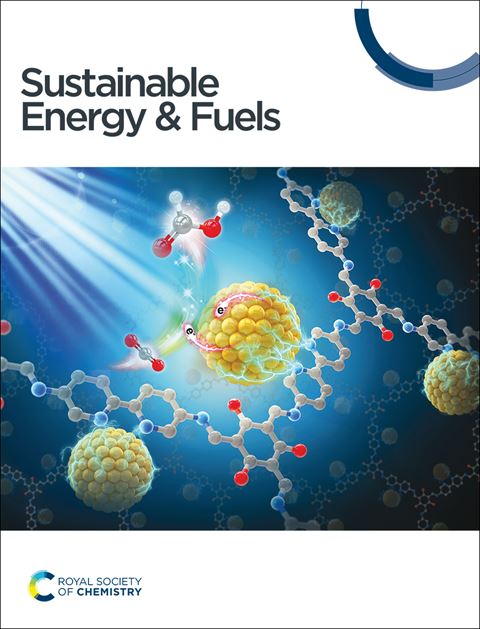一种由丙酮-水混合溶液组成的液体热电转换器,降低了溶液电阻†
IF 4.1
3区 材料科学
Q2 CHEMISTRY, PHYSICAL
引用次数: 0
摘要
液体热电转换器(LTE)电极单位面积的最大功率(Wmax)由电化学塞贝克系数α和器件电阻R确定为Wmax =,其中ΔT和s分别为电极和电极面积之间的温差。在含Fe2+/Fe3+的有机LTE中,尽管R较高,但α值远高于相应的水相LTE。在这里,我们以粘度η为线索寻找具有较低溶液阻力Rs的纯和/或混合有机溶液。我们证明了丙酮- h2o电解质组成的LTE(电极距离d为10 mm)的Wmax比相应的水相LTE的Wmax高31%。本文章由计算机程序翻译,如有差异,请以英文原文为准。

A liquid thermoelectric converter composed of acetone–water mixed solution with reduced solution resistance†
The maximum power (Wmax) per unit area of the electrode of a liquid thermoelectric converter (LTE) is determined by the electrochemical Seebeck coefficient α and device resistance R as Wmax = , where ΔT and s are the temperature difference between electrodes and electrode area, respectively. In an organic LTE containing Fe2+/Fe3+, α is much higher than that of the corresponding aqueous LTE even though R is higher. Here, we searched for pure and/or mixed organic solution with lower solution resistance Rs using viscosity η as a clue. We demonstrated that Wmax of an LTE (electrode distance d is 10 mm) composed of acetone–H2O electrolyte is 31% higher than Wmax of the corresponding aqueous LTE.
求助全文
通过发布文献求助,成功后即可免费获取论文全文。
去求助
来源期刊

Sustainable Energy & Fuels
Energy-Energy Engineering and Power Technology
CiteScore
10.00
自引率
3.60%
发文量
394
期刊介绍:
Sustainable Energy & Fuels will publish research that contributes to the development of sustainable energy technologies with a particular emphasis on new and next-generation technologies.
 求助内容:
求助内容: 应助结果提醒方式:
应助结果提醒方式:


